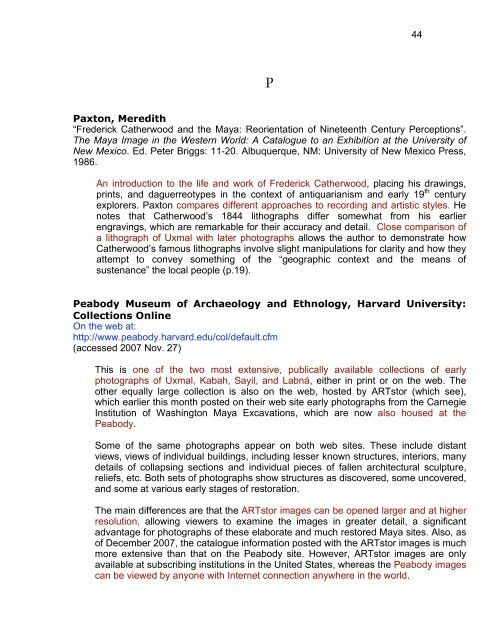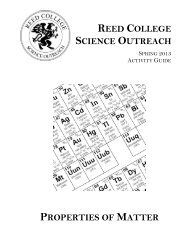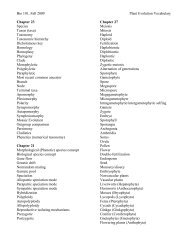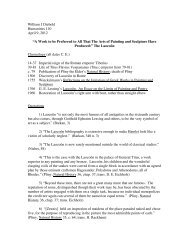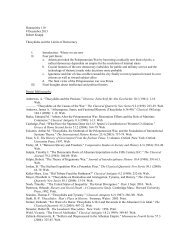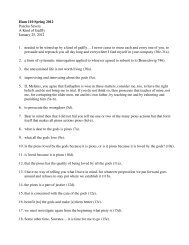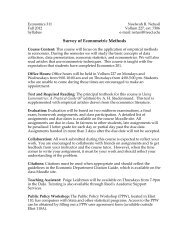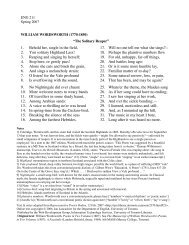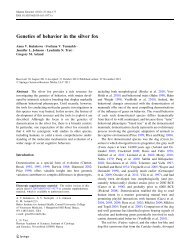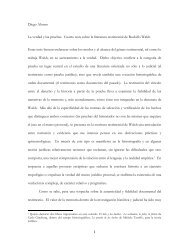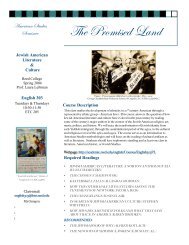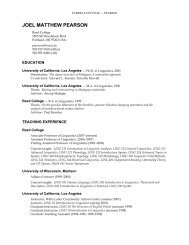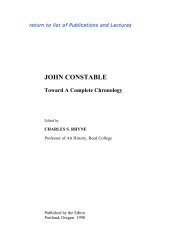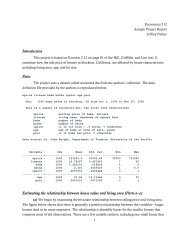Graphic and Photographic Documentation - Reed College
Graphic and Photographic Documentation - Reed College
Graphic and Photographic Documentation - Reed College
Create successful ePaper yourself
Turn your PDF publications into a flip-book with our unique Google optimized e-Paper software.
P<br />
Paxton, Meredith<br />
“Frederick Catherwood <strong>and</strong> the Maya: Reorientation of Nineteenth Century Perceptions”.<br />
The Maya Image in the Western World: A Catalogue to an Exhibition at the University of<br />
New Mexico. Ed. Peter Briggs: 11-20. Albuquerque, NM: University of New Mexico Press,<br />
1986.<br />
An introduction to the life <strong>and</strong> work of Frederick Catherwood, placing his drawings,<br />
prints, <strong>and</strong> daguerreotypes in the context of antiquarianism <strong>and</strong> early 19 th century<br />
explorers. Paxton compares different approaches to recording <strong>and</strong> artistic styles. He<br />
notes that Catherwood’s 1844 lithographs differ somewhat from his earlier<br />
engravings, which are remarkable for their accuracy <strong>and</strong> detail. Close comparison of<br />
a lithograph of Uxmal with later photographs allows the author to demonstrate how<br />
Catherwood’s famous lithographs involve slight manipulations for clarity <strong>and</strong> how they<br />
attempt to convey something of the “geographic context <strong>and</strong> the means of<br />
sustenance” the local people (p.19).<br />
Peabody Museum of Archaeology <strong>and</strong> Ethnology, Harvard University:<br />
Collections Online<br />
On the web at:<br />
http://www.peabody.harvard.edu/col/default.cfm<br />
(accessed 2007 Nov. 27)<br />
This is one of the two most extensive, publically available collections of early<br />
photographs of Uxmal, Kabah, Sayil, <strong>and</strong> Labná, either in print or on the web. The<br />
other equally large collection is also on the web, hosted by ARTstor (which see),<br />
which earlier this month posted on their web site early photographs from the Carnegie<br />
Institution of Washington Maya Excavations, which are now also housed at the<br />
Peabody.<br />
Some of the same photographs appear on both web sites. These include distant<br />
views, views of individual buildings, including lesser known structures, interiors, many<br />
details of collapsing sections <strong>and</strong> individual pieces of fallen architectural sculpture,<br />
reliefs, etc. Both sets of photographs show structures as discovered, some uncovered,<br />
<strong>and</strong> some at various early stages of restoration.<br />
The main differences are that the ARTstor images can be opened larger <strong>and</strong> at higher<br />
resolution, allowing viewers to examine the images in greater detail, a significant<br />
advantage for photographs of these elaborate <strong>and</strong> much restored Maya sites. Also, as<br />
of December 2007, the catalogue information posted with the ARTstor images is much<br />
more extensive than that on the Peabody site. However, ARTstor images are only<br />
available at subscribing institutions in the United States, whereas the Peabody images<br />
can be viewed by anyone with Internet connection anywhere in the world.<br />
44


